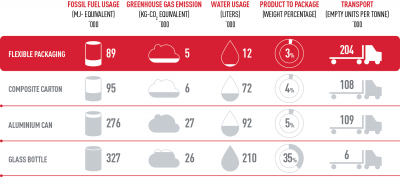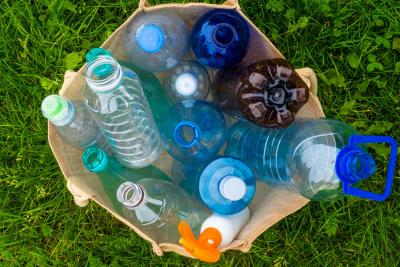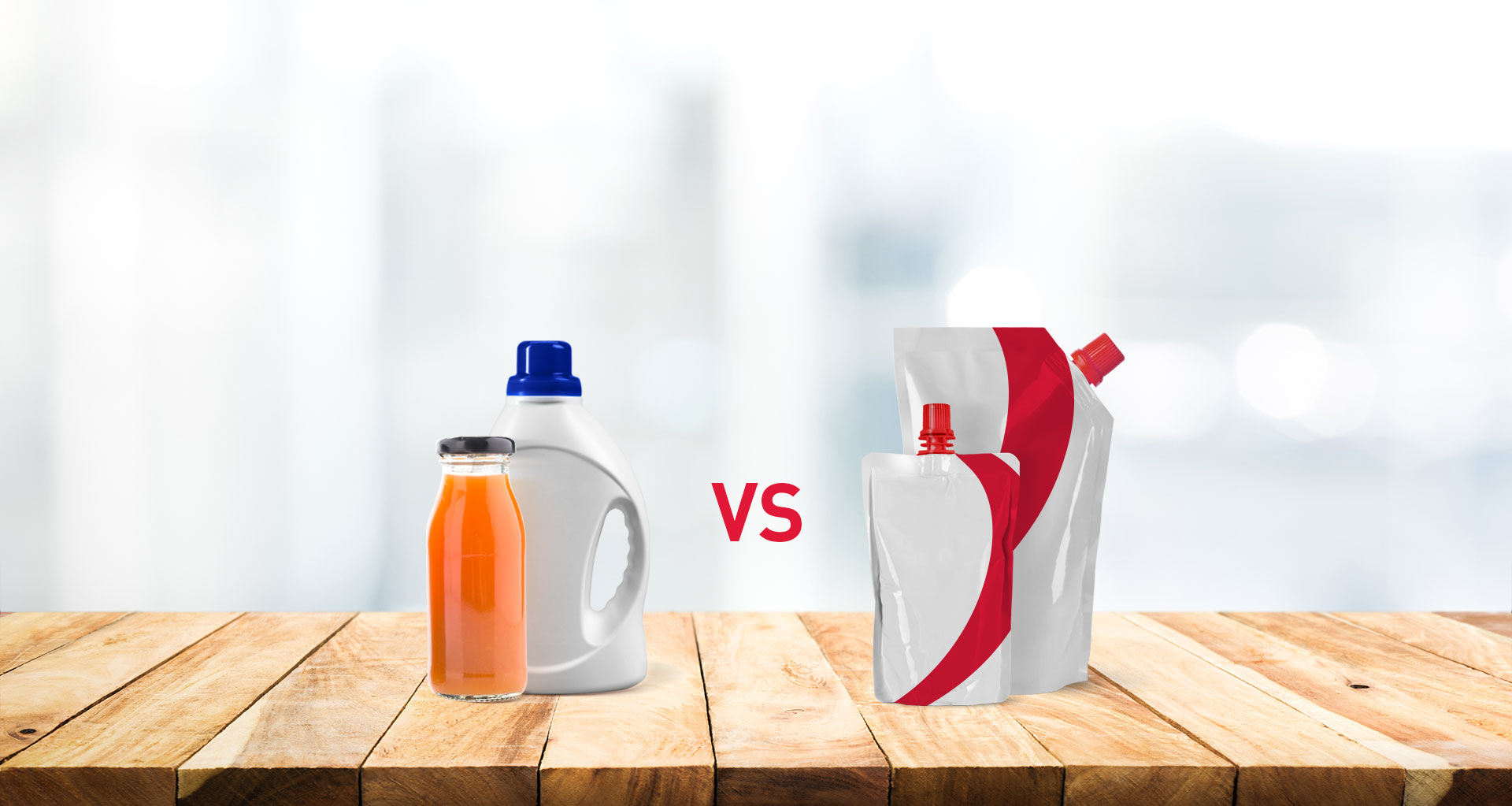Bottle vs Stand-up Pouch: which is better?
Bottles have been the leading packaging choice for liquid products since time immemorial. But now there is a new contender in the liquid packaging industry: the stand-up pouch.
Today, stand-up pouches are one of the fastest-growing choice packaging for drinks and household products. Although they are growing in popularity among consumers, the real question is whether they are an enduring alternative to the classic bottles.
In order to determine which of the two options is indeed the most effective one, we compared the pros and cons of each, taking into account the most important criteria, from production and transport costs to environmental impact and usability.

PRODUCTION
In business, numbers speak louder than ideas. When it comes to the cost of producing a standard bottle vs. a pouch, the numbers speak clearly.
Glass bottles are the most expensive to produce, costing around €2 per 500ml bottle. Meanwhile, plastic bottles are much cheaper with the manufacturing costs starting at 50 cents a piece for a bottle that holds the same volume. Comparatively, the stand-up pouch comes at the very bottom of the price list with one pouch priced at just 20 cents.
Although it seems surprising that pouches are more than half the price of plastic bottles, this is because around 50% less energy overall is used in their production process, further lowering the costs for the manufacturer.
DISTRIBUTION
The most important element of transport costs is how much stock can fit into a single truck. From this perspective, stand-up pouches are exceedingly efficient because of the flexibility of their form, which makes them stackable.
With rigid packaging, whether glass or plastic, there is no question that only a limited stock can fit into a single container. To transport the same amount of liquid in bottles, you would need more than twice the amount of space than with stand-up pouches - which can be stacked by the thousands.
This naturally means fewer trucks required to transport a much higher volume of product, once again putting stand-up pouches at an economical advantage.

PRACTICALITY
Modern consumers generally prefer plastic bottles because they are more practical than glass, which is both heavier to carry and easily damaged. However, plastic bottles are not immune to breakage since they are easily punctured in a fall.
What makes stand-up pouches more attractive is that the ergonomic shape prevents puncturing even when they are dropped from a high distance. This also indicates that the inventory is much less vulnerable to damage or waste during transport.
For the on-the-go modern consumers, flexible packaging also proves to be the most practical alternative. The stand-up pouch is simply handier to carry around in rucksacks and pretty much any sort of pocket.
ENVIRONMENT
As shown in the infographic above, various indicators can measure which the most energy efficient options are. Plastic bottles are the number one target of various environmental campaigns around the world. If we compare plastic bottles and stand-up pouches, we see a considerable difference in the environmental footprint of each, with flexible packaging using as much as 60% less plastic than rigid bottles.
In what concerns fossil fuel usage, the production of a pouch uses just 89.000 MJ compared to the glass bottle, which uses 327.000 MJ. Returning to our previous point about distribution then, we also see that transporting pouches ensures containers are filled better and therefore produce a lower volume of waste, with about 204.000 pouches vs 6.000 glass bottles per ton.
The type of recyclable material such as paperboard or corrugated cardboard boxes, and other flexible packaging made from low-density polyethylene (LDPE) or polypropylene (PP), are far more common across flexible packaging than rigid alternatives. At the same time, pouches inherently use less material, so they produce less landfill either way.

It seems the benefits of the stand-up pouch outweigh those of rigid bottles no matter how you look at it. Considering the life cycle, production costs and logistics, pouches are consistently the most economical alternative, saving costs across production, transport and landfill while also growing in popularity among consumers on the go.
The advantages of the stand-up pouch are proven by their surprisingly rapid market growth around the world, driven by consumer preferences. This is why today it is common to see a very wide range of items packed in pouches: from cleaning products (such as detergents, bleach, dish-washing liquids, refrigerants, lubricants) and personal care products (such as shampoos, conditioners, soaps) to everyday food & drink products like sauces, mayonnaise, ketchup, soups, and juices.
It’s hard to argue with the benefits of the stand-up pouch: its versatility across products definitely helps to define it as the number one packaging choice for the modern consumer and for businesses across industries.
